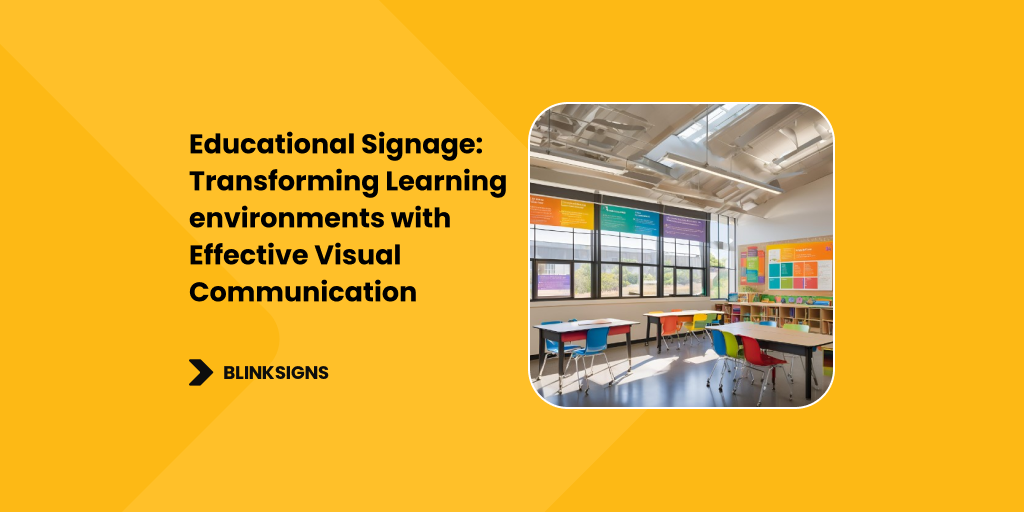
Educational Signage | Transforming Learning Environments with Effective Visual Communication
Educational signage is pivotal to creating engaging, informative, and well-organized learning environments. For wayfinding, reinforcing curriculum objectives, or enhancing school culture, signage ensures clear and accessible communication for students, staff, and visitors. It can streamline navigation, boost student engagement, and foster positive learning environments.
What is educational signage?
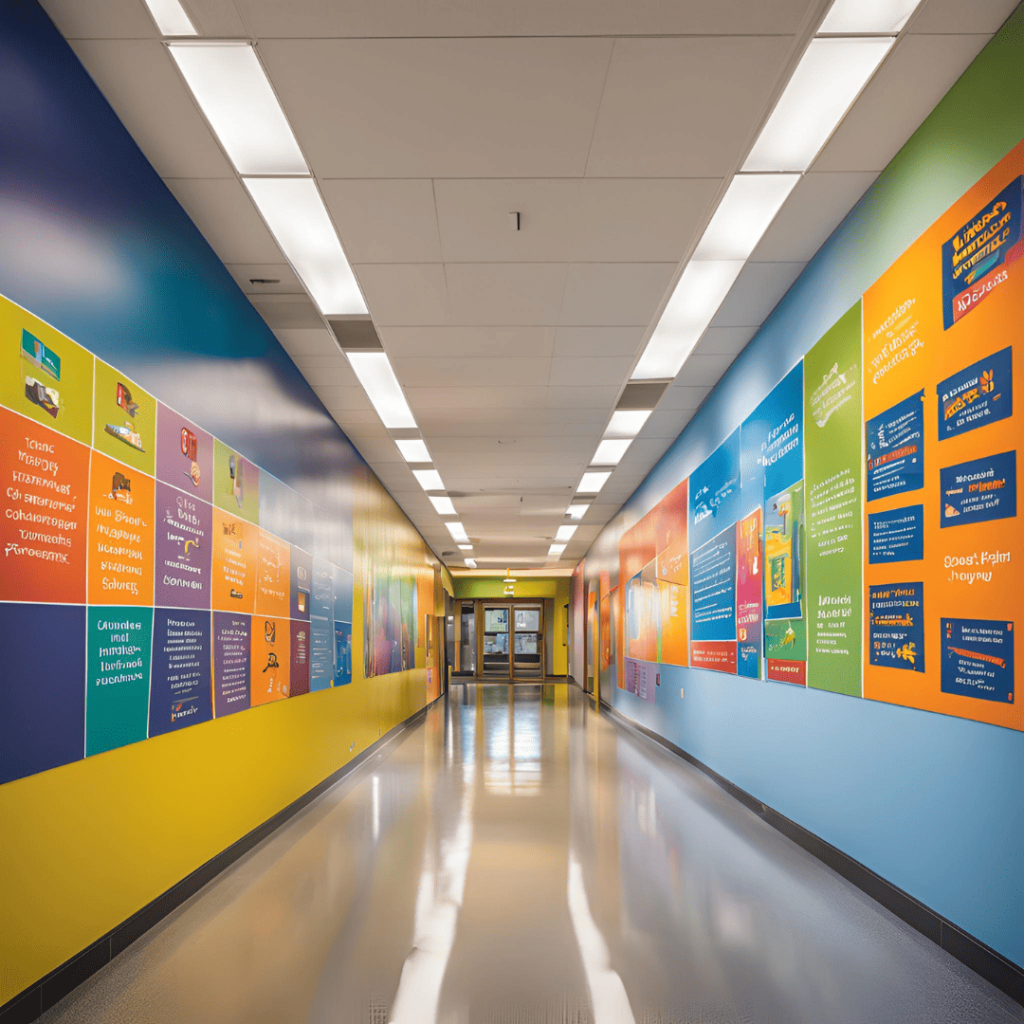
School Corridor signs
Educational signage refers to various visual communication tools used within schools and educational facilities to provide direction, convey important information, support learning, and enhance the overall environment. It is critical to daily school operations and helps build a cohesive, welcoming school culture.
Key types of educational signage include:
- Wayfinding signs: Guide individuals to important areas such as classrooms, restrooms, libraries, gyms, or administrative offices.
- Informational signs: Display essential announcements, event schedules, and emergency procedures.
- Motivational signs: Inspire students with positive messages, quotes, or images encouraging academic achievement and personal growth.
- Instructional signs: Provide educational aids and materials that reinforce classroom learning.
- Safety signs: Communicate important safety protocols, such as evacuation routes, fire exits, and health guidelines.
Why is Educational Signage Important?
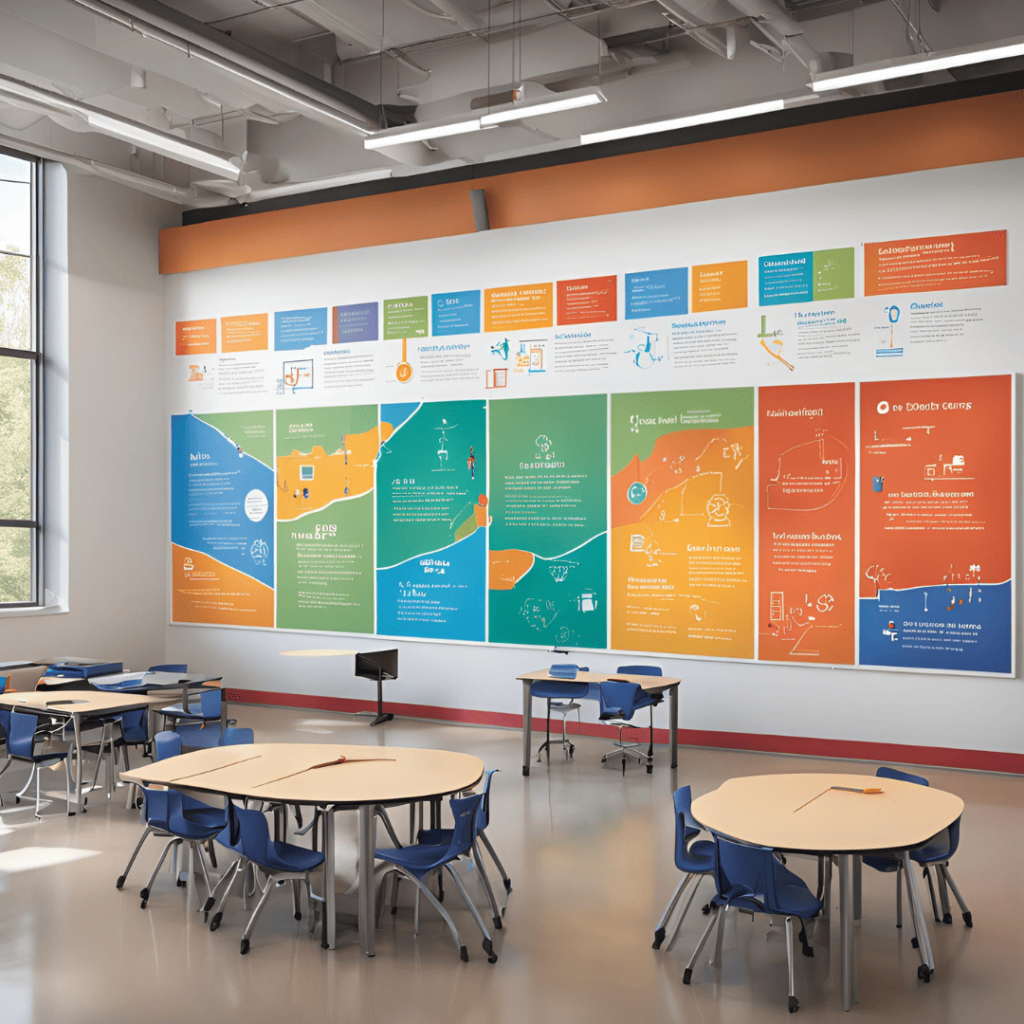
Educational Signage
Educational signage offers a wide range of benefits that improve a school’s day-to-day operations and the overall learning experience.
- Enhanced Wayfinding
Effective signage helps students, staff, and visitors easily navigate the campus. With clear wayfinding signs strategically placed throughout the facility, everyone can find key locations without confusion, saving time and reducing frustration. - Boosted Learning
Instructional and visual aids help reinforce curriculum material. Educational signage supports learning styles by visualizing key concepts, from mathematical formulas to historical timelines. This ensures students can engage with the material beyond the classroom. - Improved Student Engagement
Engaging signage—such as interactive digital displays or colorful wall graphics—can capture students’ attention and encourage active participation. Incorporating educational themes into wall art, floor graphics, or bulletin boards can stimulate curiosity and foster a love for learning. - Positive School Culture
Motivational signage that promotes inclusivity, respect, and academic excellence can contribute to a positive school culture. By displaying the school’s core values through visual communication, educational signage strengthens school spirit and encourages positive behavior. - Clear Communication
Informational signage ensures students, staff, and visitors are informed of critical updates related to event schedules, safety guidelines, or daily announcements. This reduces confusion and ensures smooth operations within the school environment.
Customization and Branding in Educational Signage
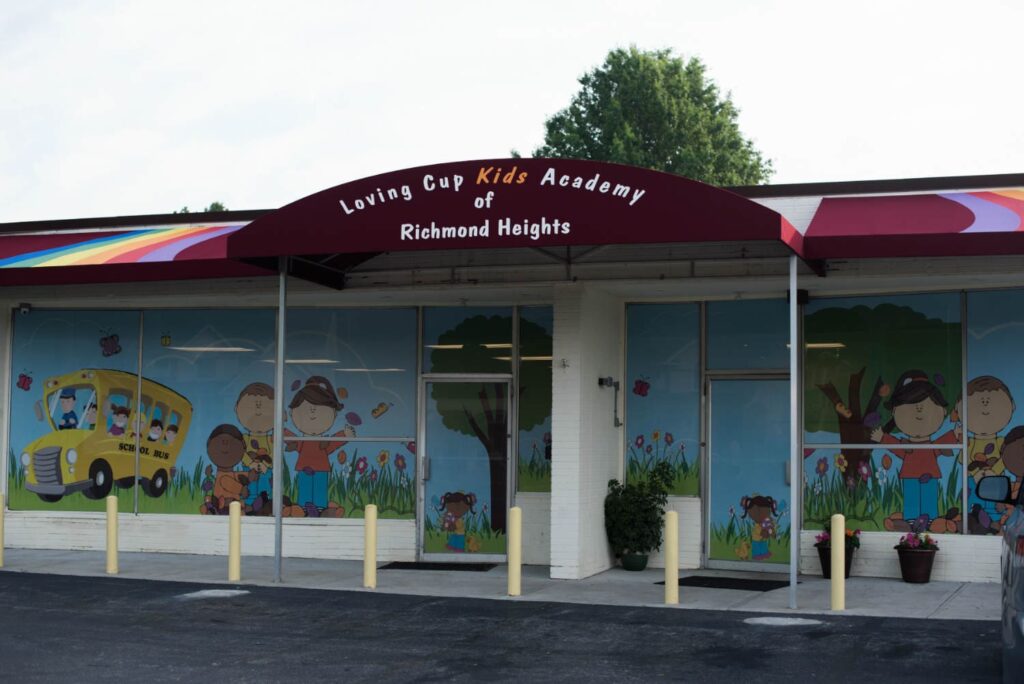
Commercial Awning Sign for school
Educational signage is more than just functional—it’s an opportunity to showcase a school’s unique identity and values. Customization allows schools to personalize signage by incorporating school logos, mascots, or colors, strengthening school branding and creating a cohesive look across the entire campus.
- Brand consistency: Using a consistent color scheme, fonts, and imagery across all signage helps unify the school’s visual identity. Whether through door signs, banners, or wall graphics, maintaining this consistency reinforces a professional and cohesive appearance.
- Unique Design Elements: Schools can opt for customized designs that reflect their mission, vision, and cultural diversity, making students feel more connected to their learning environment.
Types of Educational Signage
1. Digital Signage
Digital signage is a versatile solution that uses dynamic displays to present real-time information, videos, and interactive content. It allows for easy updates and can be tailored to suit a wide range of purposes:
- Daily announcements and event promotions
- Showcasing student achievements or creative work
- Delivering interactive learning experiences in hallways or common spaces
- Communicating emergency alerts or schedule changes
2. Wall Graphics
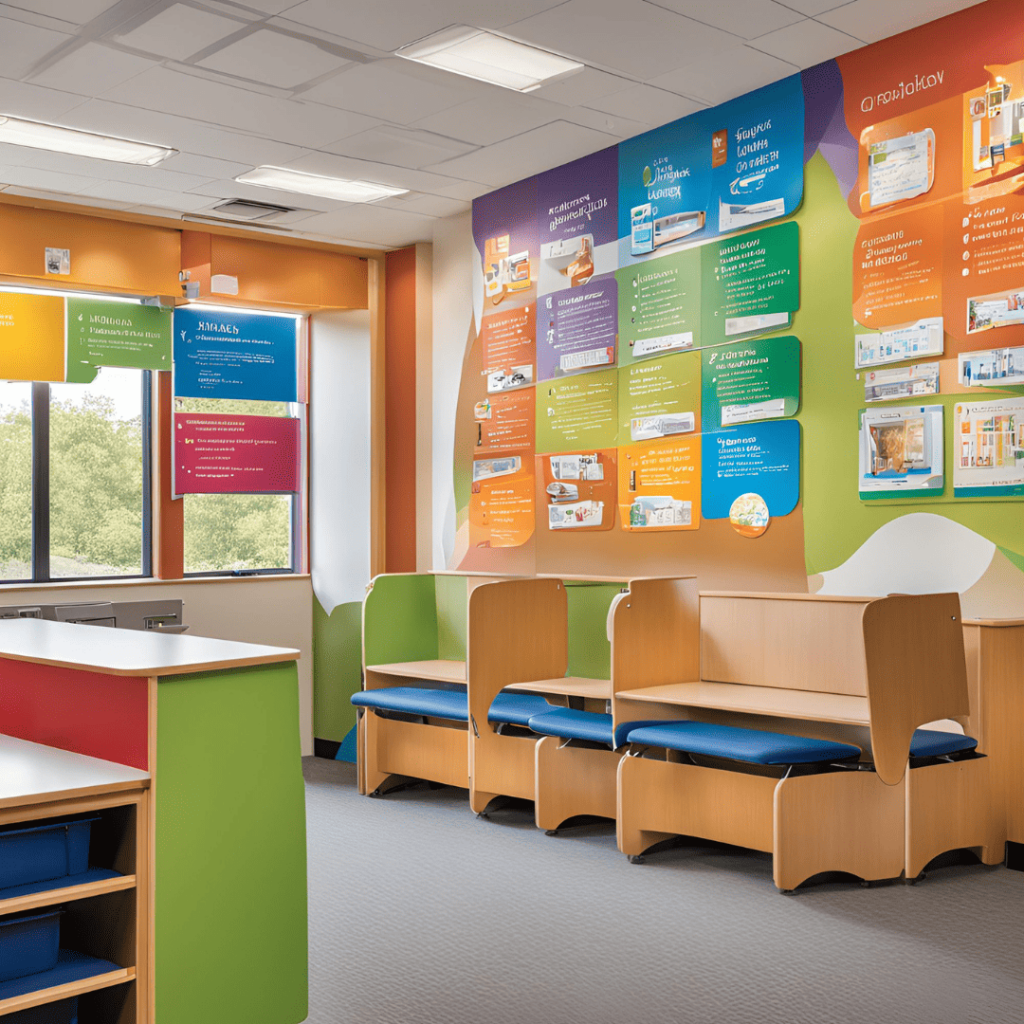
Classroom signs wall graphics
Wall graphics transform blank walls into vibrant, educational spaces that are engaging and inspiring. These graphics can be designed to support specific subjects, promote school values, or celebrate student accomplishments. Popular uses include:
- Large-scale murals highlighting historical events, scientific concepts, or inspirational figures
- Timelines and maps that visually represent key educational content
- Inspirational quotes that motivate students to strive for academic and personal success
3. Bulletin Boards
Bulletin boards are a dynamic way to keep students and staff informed. They can be used for:
- Displaying student projects, achievements, or artwork
- Sharing updates on upcoming events, holidays, or school activities
- Featuring seasonal or themed content that aligns with school initiatives (e.g., recycling programs, literacy weeks)
4. Door Signs
Door signs identify classrooms, offices, and other important locations within the school. These signs can be customized with teacher names, room numbers, or subject titles, making it easy for students and visitors to find their way. They can also include icons or images to assist non-English speakers or younger students.
5. Floor Graphics
Floor graphics are a unique way to guide students and staff while providing educational content. Common uses include:
- Directional arrows pointing to key areas such as the cafeteria, gym, or library
- Educational themes such as numbers, shapes, or letters for elementary students
- Safety messages reminding students to walk, not run, in hallways
6. Banners
Banners are ideal for promoting school events, showcasing school pride, or celebrating student success. Common placements include:
- Gymnasiums and auditoriums for graduation ceremonies, award presentations, or sporting events
- Hallways to welcome students back after holidays or announce special events
- Outdoor spaces for promoting school achievements or upcoming activities
7. Posters
Posters are simple yet effective tools for communicating important information. These can include:
- Classroom rules and expectations include “Be respectful” or “Listen carefully.”
- Motivational messages to inspire positive behavior and academic success
- Health and safety guidelines, including hygiene practices and emergency instructions
8. A-Frame Signs
A-frame signs are portable, double-sided signs that can be placed at school entrances or around the campus to provide directional information or announce events. They are particularly useful for:
- Welcoming students and visitors during open houses or special events
- Providing directions during assemblies, conferences, or after-school activities
- Announcing important updates, such as schedule changes or meeting times
Accessibility and Compliance in Educational Signage
Educational signage must be inclusive and accessible to all students, staff, and visitors. This includes adhering to ADA (Americans with Disabilities Act) compliance standards and ensuring that signage is accessible for individuals with disabilities.
- Braille and Tactile Signs: Schools can incorporate Braille and tactile elements on signs to support visually impaired students.
- High Contrast and Readability: Signage should be designed with high contrast and legible fonts to ensure readability for students with vision impairments.
- Height and Placement: Signs should be placed at heights accessible to students of all abilities, including those in wheelchairs.
Durability and Material Choices for Educational Signage
Schools are high-traffic environments, making durability a key consideration when choosing signage materials. Signage should be able to withstand daily wear and tear while maintaining its visual appeal.
- Weather-Resistant Materials: Outdoor banners or signs must be made of materials resistant to UV rays, water, and temperature changes.
- Scratch-Resistant Surfaces: Indoor signage should feature surfaces that resist scratches, ensuring long-lasting quality and minimal maintenance.
- Sustainability: Many schools are focused on sustainability. BlinkSigns offers eco-friendly materials that align with green initiatives, ensuring durable and environmentally responsible signage.
Smart and Interactive Signage Solutions
Modern educational environments are embracing technology, and smart signage is becoming an increasingly popular choice. Schools can integrate interactive elements into their signage to enhance student engagement and provide instant access to information.
- Touchscreen Displays: Interactive digital signage allows students to engage directly with content, whether navigating a school map, accessing online resources, or participating in interactive quizzes.
- QR Codes and NFC Tags: Smart signage can include QR codes or NFC tags that students can scan with their smartphones to access additional information, digital content, or learning materials.
Best Practices for Educational Signage
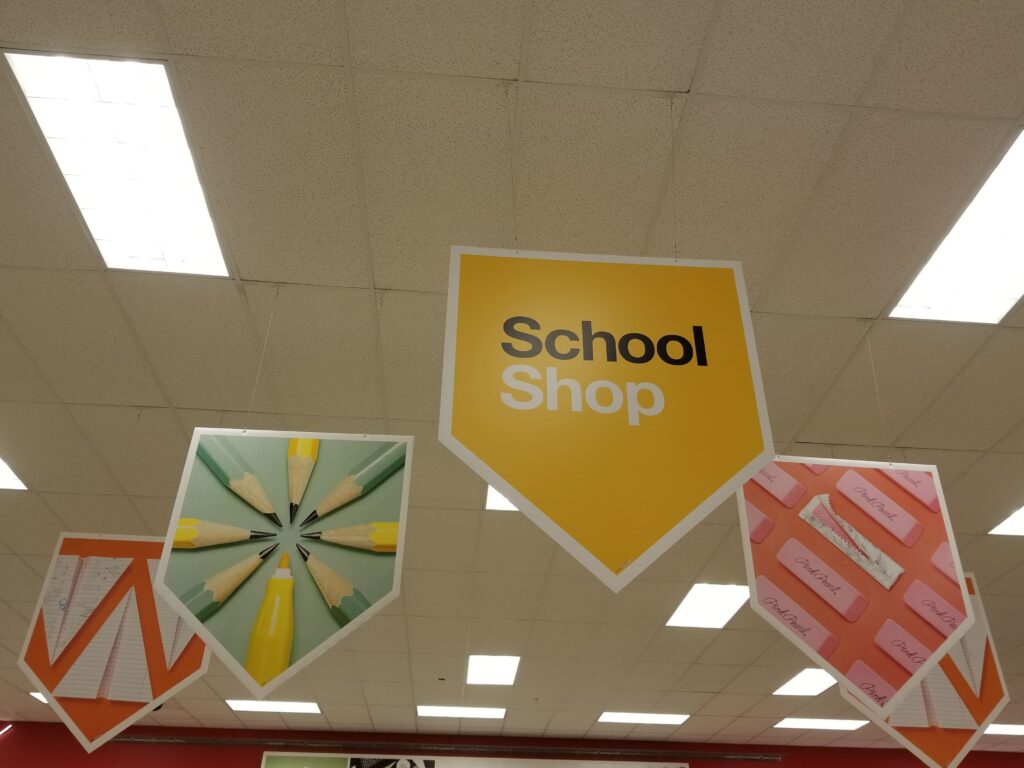
School Signage
To maximize the impact of educational signage, schools should follow these best practices:
- Keep it Simple: Use concise language and clear messaging to ensure readability for all age groups. Avoid jargon or overly complex terms.
- Visual Appeal: Incorporate relevant visuals and graphics to engage students and enhance the learning experience.
- Consistent Design: Use a cohesive design with consistent colors, fonts, and branding to create a unified visual identity across the campus.
- Strategic Placement: To ensure maximum impact, place signage in high-visibility areas, such as entrances, hallways, and common areas.
- Involve Students: Encourage student participation in the design of educational signage to foster a sense of ownership and creativity.
- Update Regularly: Ensure signage remains current by updating digital displays and replacing outdated posters or banners.
Conclusion
Educational signage creates an effective, engaging, and safe school environment. From digital displays and wall graphics to wayfinding signs and motivational posters, well-designed signage enhances communication, supports learning, and promotes a positive school culture.
BlinkSigns specializes in delivering high-quality, customized signage solutions that cater to the unique needs of educational institutions, helping schools create inspiring spaces where students can thrive.